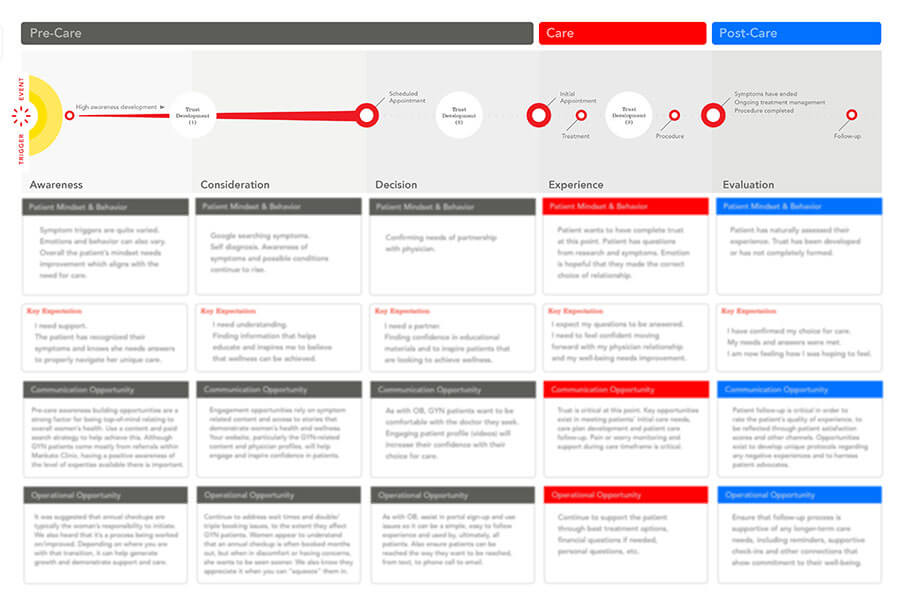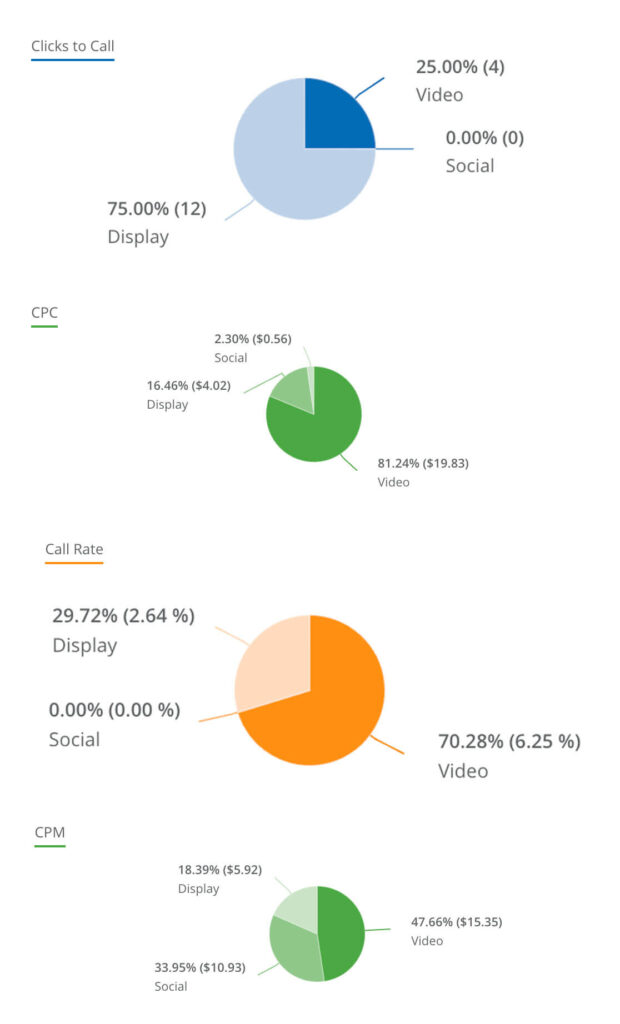The third of a series of four: Hailey Sault’s Engage newsletter insights for 2023.
With Kaufman Hall reporting pressure on profit margins squeezing health systems across the country, competition for almost every patient is fierce. And in this post-pandemic world, patients expect more from healthcare providers than ever before.
Let’s be honest, though—legacy marketing strategies aren’t delivering the metrics and KPI’s that you need. Real ROI is driven by patient engagement, acquisition and loyalty across digital channels.

In the world we live in, most of your prospective patients are making their healthcare choices online. But dropping legacy content into social media and on your website isn’t going to cut it either. The best healthcare marketing teams recognize that real humans are using their channels, so they employ human-centered design, patient journey mapping and personas to match the human behavior of their prospective patients. These three skills make up the foundation of measurable, successful healthcare marketing today.
Applying human-centered design principles means developing campaigns that resonate with patients by focusing on their unique needs and preferences throughout their journey. By taking a human-centered approach, healthcare marketers create paid and organic content that is more authentic, engaging, and more likely to drive the positive outcomes you absolutely need right now.
Personas are the foundational tool for activating the patient journey to create engagement and facilitate acquisition. Personas are fictional representations of different types of patients, and capture their unique characteristics, triggers and barriers to care, and behaviors. By creating personas, the most proficient healthcare marketing teams better understand their prospective patients and tailor both organic and paid content to meet their specific needs and preferences.
Naturally, there are plenty of off-the-shelf options for personas. Many marketing firms and media companies offer generic options (which are all better than legacy “target audiences”). However, best practices for creating your own highly effective personas include:

- Conduct research to inform your personas. Use surveys, interviews, and other research methods to collect data on patient demographics, behaviors, and motivations.
- Keep personas focused on patients. Personas should be centered around the needs and behaviors of patients, not healthcare providers or other stakeholders.
- Develop multiple personas. Different patients may have different needs and motivations, so developing multiple personas can help ensure that your messaging and content resonates with a wide range of patients.
- Give your personas names and backstories. This helps bring the personas to life and makes it easier for healthcare marketers to understand and relate to them. It also helps develop organic and paid content that meets the needs of your personas.
- Continuously update your personas. As patient needs and behaviors evolve, it’s important to update your personas to ensure they remain relevant and accurate.
As an extension of the human-centered design process, patient journey mapping is powerful for optimizing patient engagement and experience, building loyalty, and ultimately driving better outcomes. By understanding the patient’s emotions and expectations at each stage of the treatment process, healthcare marketers can ensure that patients feel informed, supported, and cared for throughout the continuum of care.

Patient journey mapping can also be used to identify opportunities to deliver personalized messaging to patients, such as during the post-treatment follow-up process, to reinforce the provider’s value proposition and build patient loyalty. By optimizing the patient experience, healthcare providers can improve patient satisfaction, reduce patient churn, and ultimately generate more downstream volume.
Using human-centered design, personas, and journey mapping in healthcare marketing leads to several ideal outcomes:
- Improved patient engagement. By tailoring messaging and content to the needs and preferences of patients, healthcare marketers can create campaigns that are more engaging and more likely to drive patient engagement.
- Increased patient satisfaction. When patients feel like their needs and preferences are being met, they are more likely to be satisfied with their healthcare experience.
- Better health outcomes. By creating campaigns that resonate with patients and drive engagement, healthcare marketers can help patients take the actions necessary to achieve better health outcomes.

Overall, human-centered design, personas, and best practices are essential tools for healthcare marketers looking to generate the volume and revenue your system needs. By focusing on the needs and behaviors of individuals, healthcare marketers can create both paid and organic content that resonates with patients and leads to better health outcomes. By truly understanding the patient journey—ideally, for each service line—marketing teams can identify the touchpoints where and how patients are most likely to engage with your owned platforms. By optimizing these touchpoints, you’ll increase patient engagement, leverage critical conversion points, and ultimately drive better outcomes.



